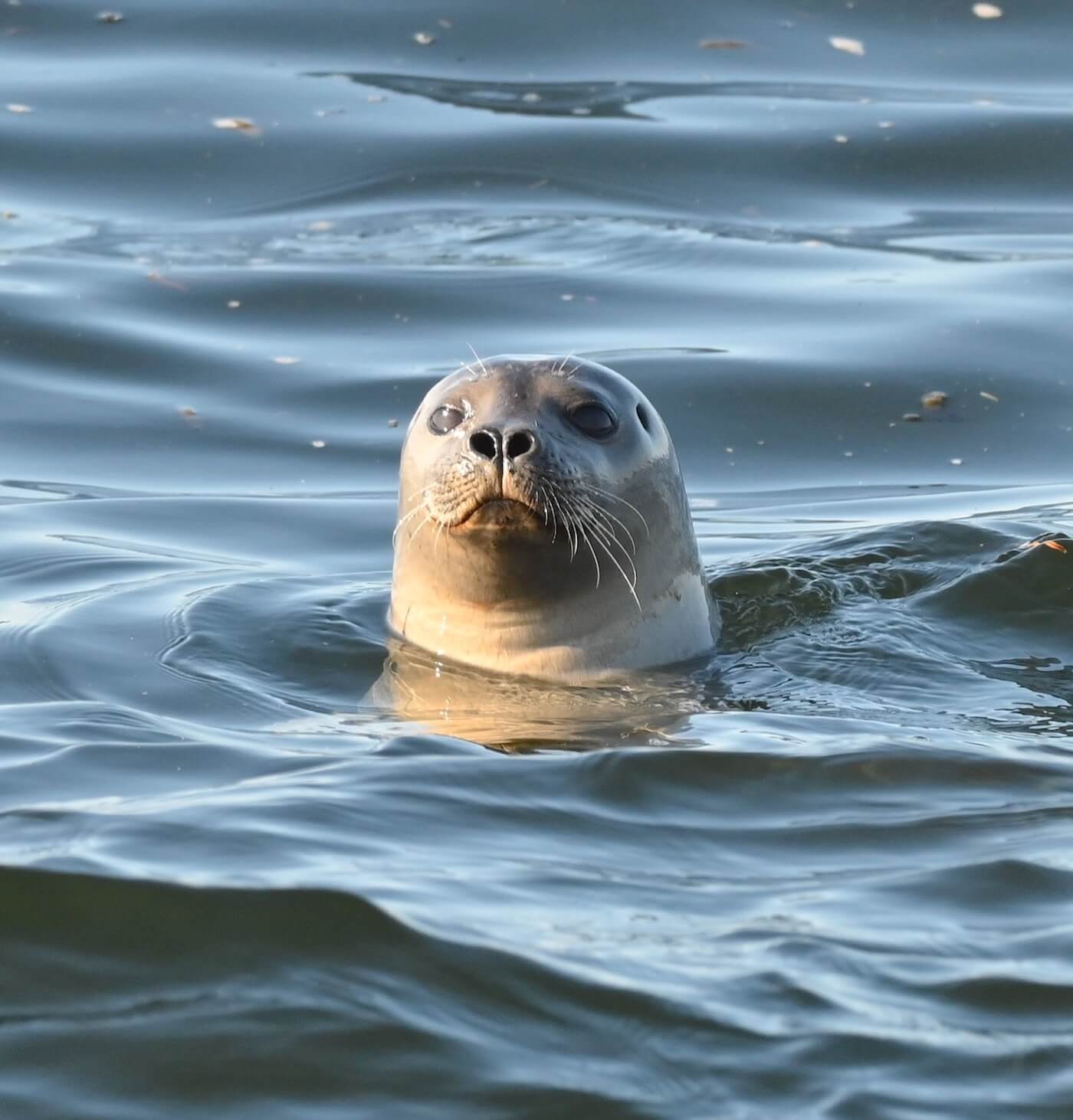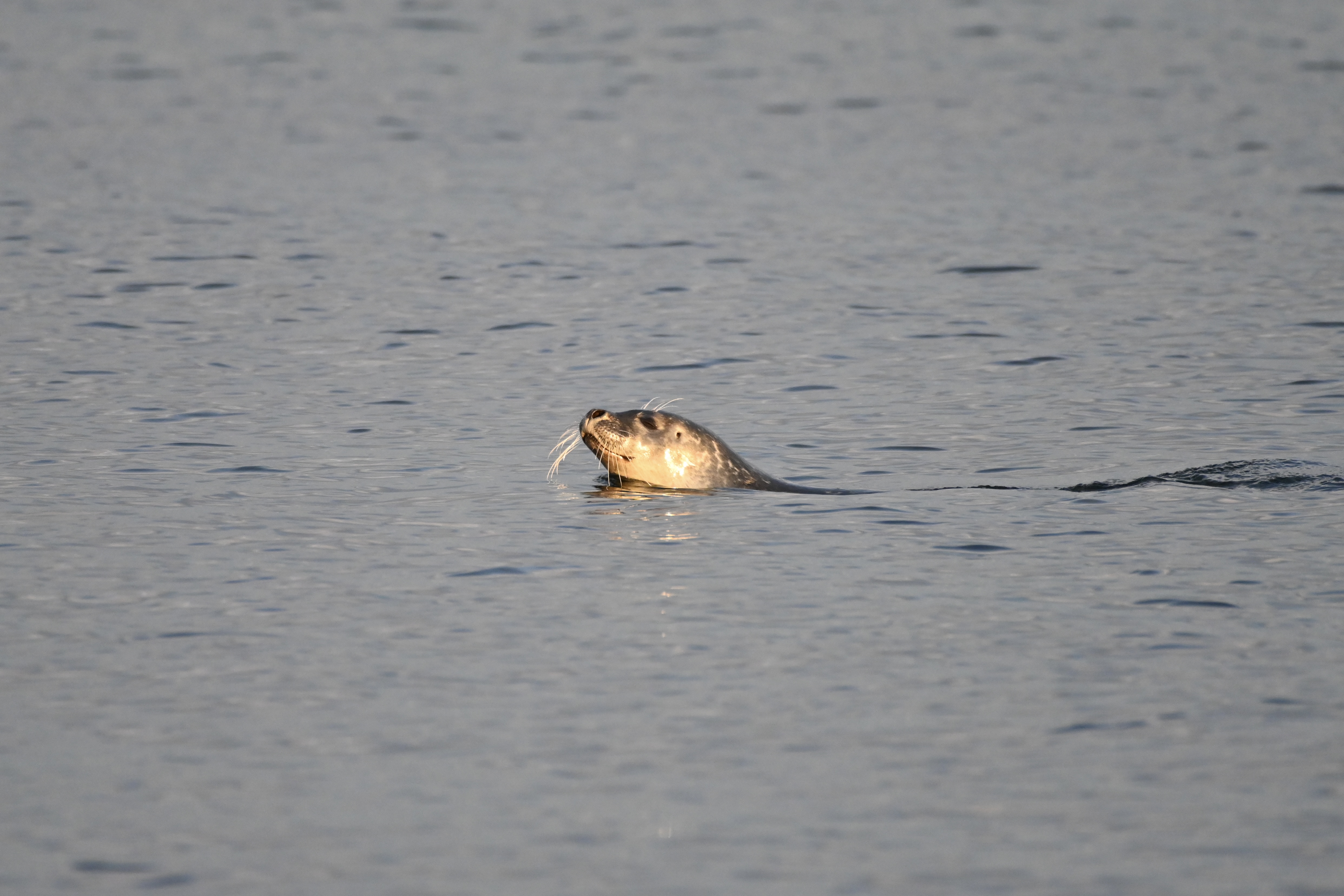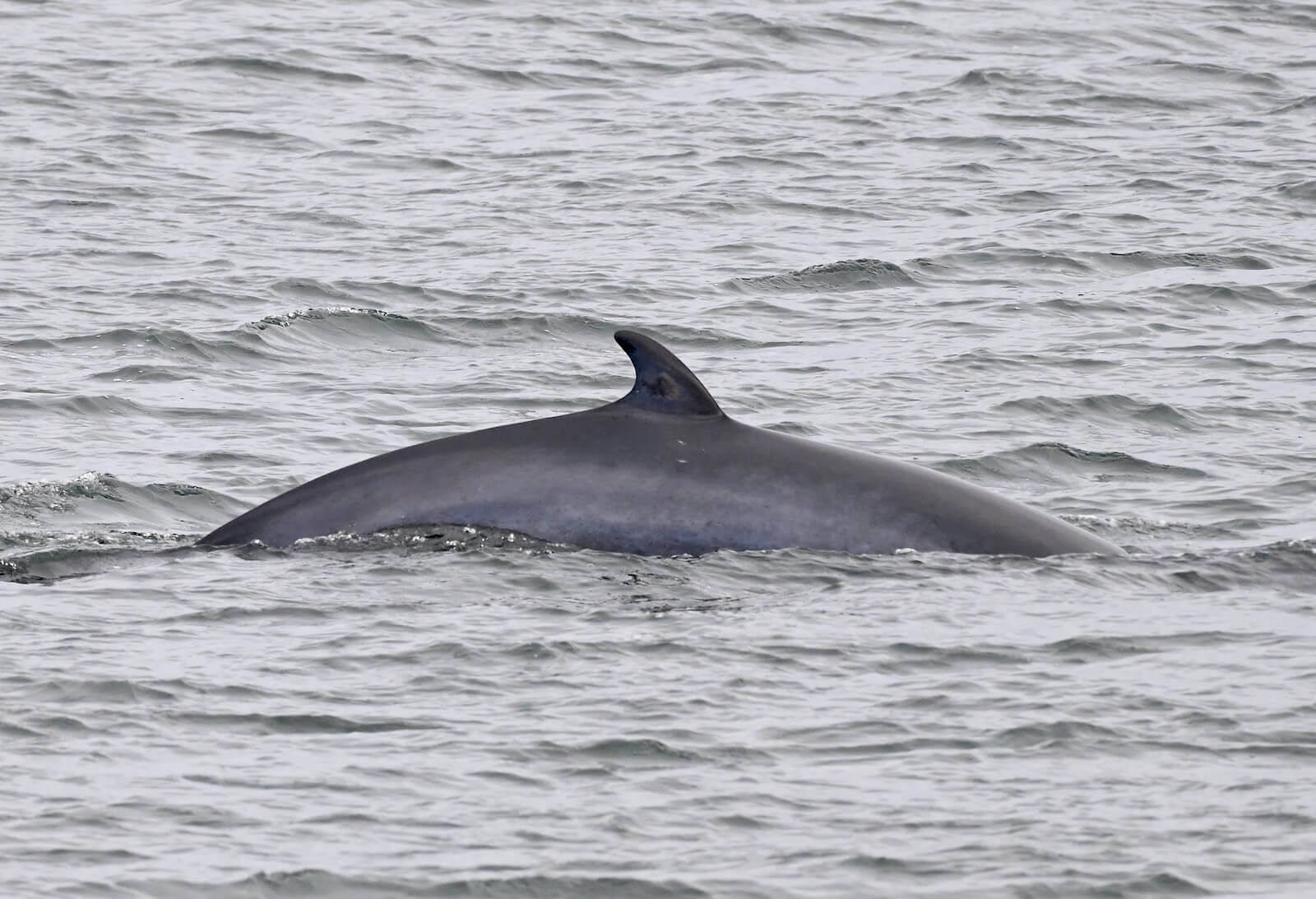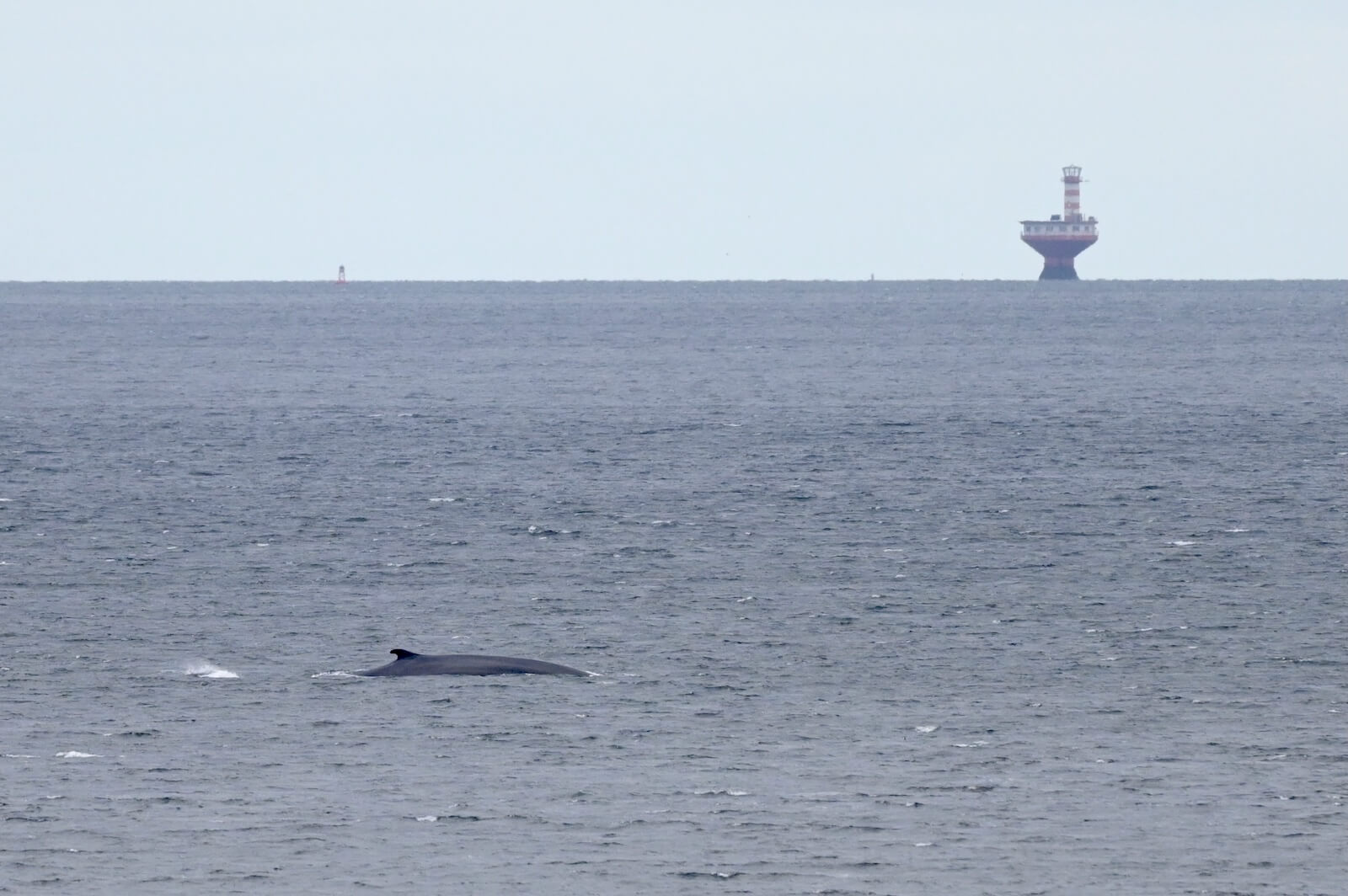This past week, belugas were the talk of the town! More than fifty individuals ventured near the town’s marina. White backs were also spotted in the mouth of the Saguenay Fjord, while seals and minke whales dot the St. Lawrence. Two humpback whales visited Gaspé Bay, though large whales are still eagerly awaited in the estuary.
More and more belugas in Baie-Comeau!
You only have to watch the videos or photos to understand: There were plenty of belugas in Baie-Comeau this week! “Seeing them so close, right from the shore, was magical,” says one whale lover. This time of year, belugas are often farther upstream in the estuary. GREMM’s scientific director Robert Michaud comments on the sighting: “It’s an interesting observation, though a bit late. You might call them stragglers! Will such occurrences become the new norm? We’re all a bit on the edge of our seats regarding these sightings. Could it be an adaptation to climate change? A bit like right whales. Even if it is anecdotal, the evidence is interesting.” This spring, white whales were also spotted in the Cap-des-Rosiers and Percé areas.
For one amateur cetologist, June 3 marked his third outing in the estuary this year: “Still no large rorquals, but there’s a constant presence of belugas.” Two minke whales were observed, one at Pointe des Monts and the other in Matane, along with belugas, a small group of harp seals (about a dozen) on the move and a few porpoises. Lots of seabirds, including several Arctic terns.”
Like a whale in the water
Whale watchers who share their encounters with me each week often include in their stories their sightings of birds, wildlife, or the marine environment. Even if this column is dedicated to marine mammals, I can understand why. Whether you have your two feet on the ground or you’re being tossed around in a boat on the water, it’s nearly impossible to separate an observation from its context.
On June 2, I spent some time at Pointe-Rouge in Tadoussac’s Parc Languedoc nature reserve. As soon as I arrived, I caught sight of a shorebird flying over the coast, gliding toward the water. As the bird reaches the river, it crosses paths with a minke whale. The noise made by the latter’s clearly visible spout mixes with that of the singing birds. In the foreground, the bright green mosses and other vegetation contrast with the red granite. The orange hues of the evening sky caused by forest fires in Manitoba ripple across the bay. I realize just how beautiful whales and their environment are, and that it’s the sum of all these elements that makes for the most magnificent sightings.
In Sept-Îles, a witness was lucky enough to see a minke whale in all its splendour! “What appeared to be a young minke whale breached eight times, one after the other. The animal performed the breaches without interruption, taking only the time it needed to make its next thrust.” Impressive moves! There are no known scientific explanations for this type of behaviour. It could be a form of play for young animals, seduction and defiance for breeding males, communication, or even a means of ridding the body of parasites.
Humpbacks in the Gaspé and seals just about everywhere
Two humpback whales were reported in Gaspé Bay, while a minke whale was also in the area, as were a few seals. One enthusiast shares the sighting of “about twenty harbour seals hauled out on the rocks in the Saint-Ulric area.” A harbour seal was seen passing through Gallix, while others were reported throughout the Côte-Nord region.
Thanks to all our collaborators!
Special thanks go out to all our observers who share their love for marine mammals with us! Your encounters with cetaceans and pinnipeds are always a pleasure to read and discover.
On the water or from shore, it is your eyes that give life to this column.
Odélie Brouillette
Patrice Corbeil
Thalia Cohen-Bacry
Laeticia Desbordes
Lawrence Desrosiers
Pierre-Soleil Dion
Cédric Gascon
Hélène Guitton
Geoffroy Ingret
Daniel Jouis
Audrey Leblanc
Pascal Pitre
Renaud Pintiaux
Diane Ostiguy
René Roy
Andréanne Sylvain
Marielle Vanasse
J. Varin
And to all the others!
Additionally, we would like to acknowledge the following teams that also share their sightings:
Sept-Îles Research and Education Centre (CERSI)
Group for Research and Education on Marine Mammals (GREMM)
Marine Mammal Observation Network (MMON)
Quebec Marine Mammal Emergency Response Network (QMMERN)
Mingan Island Cetacean Study (MICS)
Would you also like to share your observations?
Have you seen any marine mammals in the St. Lawrence? Whether it’s a spout offshore or just a couple of seals, drop us a line and send your photos to [email protected]!








